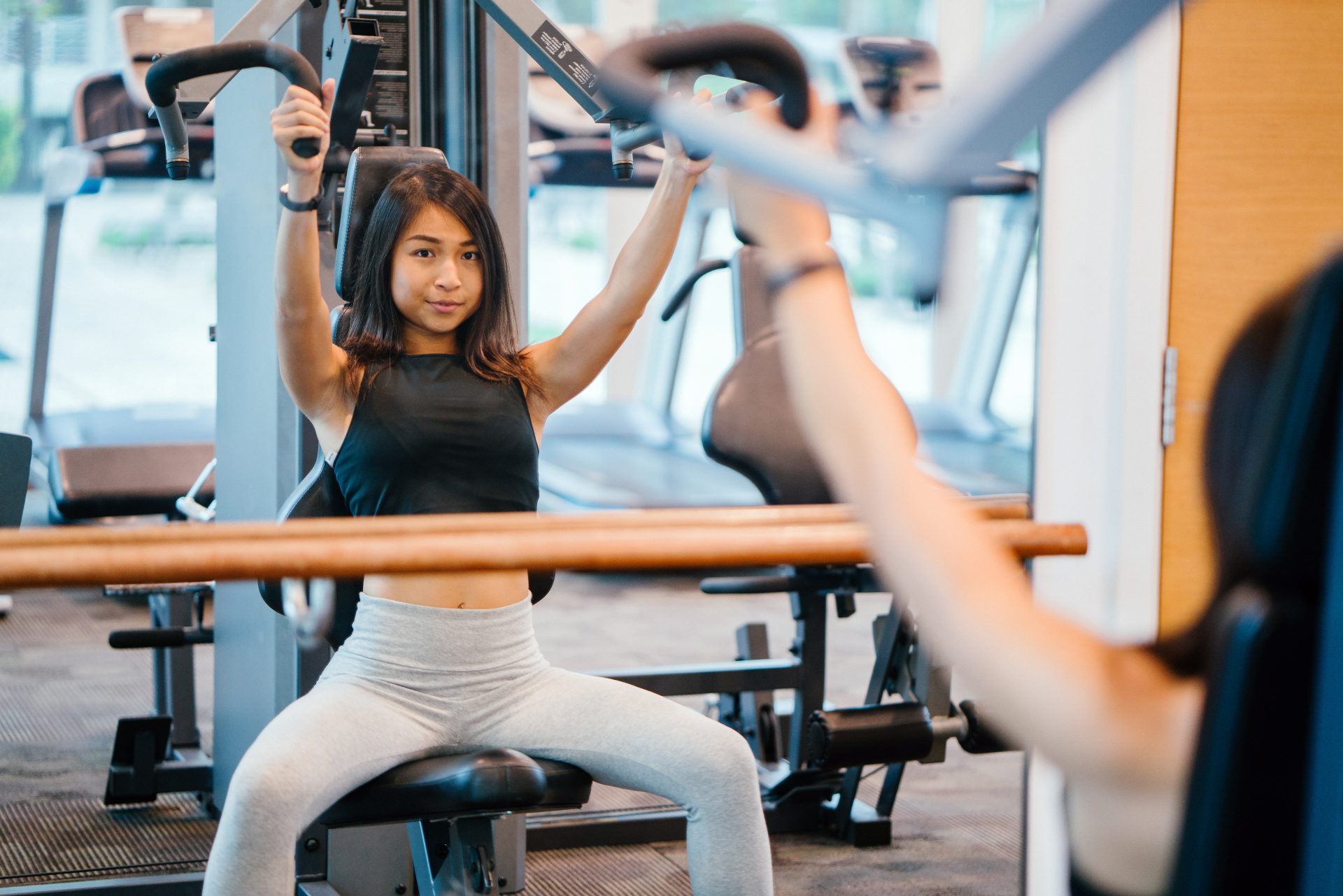These practical mindset tools will help you feel better taking up space in the gym.
Predictably, gyms are heaving right now. As happens every January, everyone’s got to work on their resolutions, acyclovir 800 mg 4 times a day whether that’s building strength, improving fitness, or just being consistent enough with exercise to feel the physical and mental benefits. That’s not meant as a shady comment to newcomers – I’m delighted to see such a busy gym full of people moving their bodies.
The hustle and bustle can be motivational; being in a room full of others working hard has been shown to boost performance in some people. But it can also be overwhelming. With coronavirus cases particularly high right now, many are rightfully feeling anxious about being in crowded spaces, so remember that you don’t have to go to the gym to get a good workout. But if you do decide to, how do you actually get through your workout when there are that many people swarming the equipment?
You may also like
New year resolutions: “An open letter to the gym goers who moan about January new starters”
For those who feel nervous in busy gyms, the most common piece of advice is to grab a pair of dumbbells and set yourself up in the corner so you don’t have to fight for the kit. On the days you can’t face others, that’s fine. But generally, I don’t think it’s the best advice – particularly for women. We should be encouraging everyone to take up space, to be at the heart of the action, to understand that they are just as deserving of the barbell as the other people who are waiting for it to be free.
It’s not just beginners who feel uncomfortable with taking up space: the issue of ‘gymtimidation’ is well documented in even experienced gym-goers (and most usually in women). So, we asked experts how to navigate fitness spaces without feeling overwhelmed during this busy season.
How to exercise in a busy gym
1. Exposure
One of the best ways to reduce anxiety around a situation is to ‘feel the fear and do it anyway’. That might be a cliche but it’s true. That’s why health psychologist Dr Sula Windgassen suggests that simply walking right on through is the best cure. “If we never do something, we build it up into a bigger issue in our mind. We come up with all sorts of predictions about what people are going to think or what is going to happen – in this case, will all the fitter, stronger or more capable gym-goers think you’re wasting everyone’s time by using the squat rack, for example? The less we do it and the more we shy away from it, the more the anxiety is going to build and then it’s only going to be harder.”

Don’t panic: exposure doesn’t have to mean refusing to give up your barbell or asking the most intimidating person when they’ll be done. Instead, Dr Windgassen suggests setting yourself one ‘challenge’ per workout. “If there’s one machine or piece of kit that you’re really keen to use but can see that it’s busy, set yourself up to use it for a short amount of time and see how it feels,” she says. If you feel uncomfortable, know that it’s only two or three sets and you can move back to a quieter section. But hopefully, you’ll realise that no one is judging you and you might feel confident enough to move on to a different piece of kit.
You may also like
Strength training: 5 best weight machines to use in the gym
2. Knowledge
Going in with a plan is always useful. You’ll feel more comfortable asking someone if they’re done with their kit if you really know what you want to do with it after. “Seeking out that knowledge before you go gives you confidence – and means you don’t just stand there and panic when looking at the machines. It also might mean that you go with a PT, who will be more comfortable finding the space for you in the gym, or in a class where the kit is already lined up,” says Dr Windgassen.
It’s also much better to understand the mechanics behind the exercises, rather than performing them. For example, if you have a plan that dictates you do leg press followed by hamstring curls, what do you do when neither of these are free? Knowing how to switch out exercises for something similar can make you more comfortable with being able to jump from machines to dumbbells, and means you can work with what’s available to you at that moment without compromise.

3. Interactions
“Knowing the protocols of how to approach people without pissing them off is unbelievably useful in the gym,” says Dottie Fildes, a trainer from the Strong Women Training Club. Obviously, you know how to talk to people without being rude. But we seem to have this contorted view of what is acceptable gym etiquette. There’s a belief that everyone in there is scary, rude and unapproachable – that you shouldn’t make eye contact or smile. But that’s just not true.
“Ideally, you should wait for the person to finish their set. Gently alert them that you’re there and ask them how many sets they have. Then, then rather than lingering, ask them if they mind grabbing you when they’re done. That way you’re not putting pressure on them – you’re not lingering – and they can reserve it for you,” says Fildes.
You may also like
Gym etiquette: “how do I exercise in public after a year of home workouts?”
Dr Windgassen agrees that politeness is the best way forward: “Acknowledge the people that are waiting for your piece of kit, smile at people who are using the things you want to use next. Breed familiarity so it stops feeling like a pressurised ‘get in and get out’ session and you can foster some sort of relationship and camaraderie.”
These things were true in my gym this morning – things were busy, but those of us who were confident enough smiled and joked as two people ran for the same squat rack. We used every inch of the floor, asking, “Do you mind if I just place my bench here?” or “Can I use that barbell after you?” with answers of “Yes, course” or “Sure thing”. In pre-Covid times, we may have shared equipment, but for now, everyone just got their sets over in sensible time. Despite what you may have been led to believe, being nice goes a long way in the gym.
4. Know your rights
Seriously, everyone deserves the kit as much as each other – and to feel safe when using it. Don’t be afraid to pick up what you need; a 20kg squat is just as deserving as a 100kg squat. And don’t be afraid of setting boundaries for your health, whether that’s wiping down your kit before use, wearing your mask or reporting people who aren’t giving you space.
“Whether you’re a beginner or a regular, you have every right to be there to use that equipment. You all pay the same membership, all get up at the same time and all go there for the same reasons. It’s about reminding yourself that, regardless of your experience and your level, you deserve that piece of equipment as much as the next person,” says Fildes.
Images: Getty/Pexels
Source: Read Full Article
